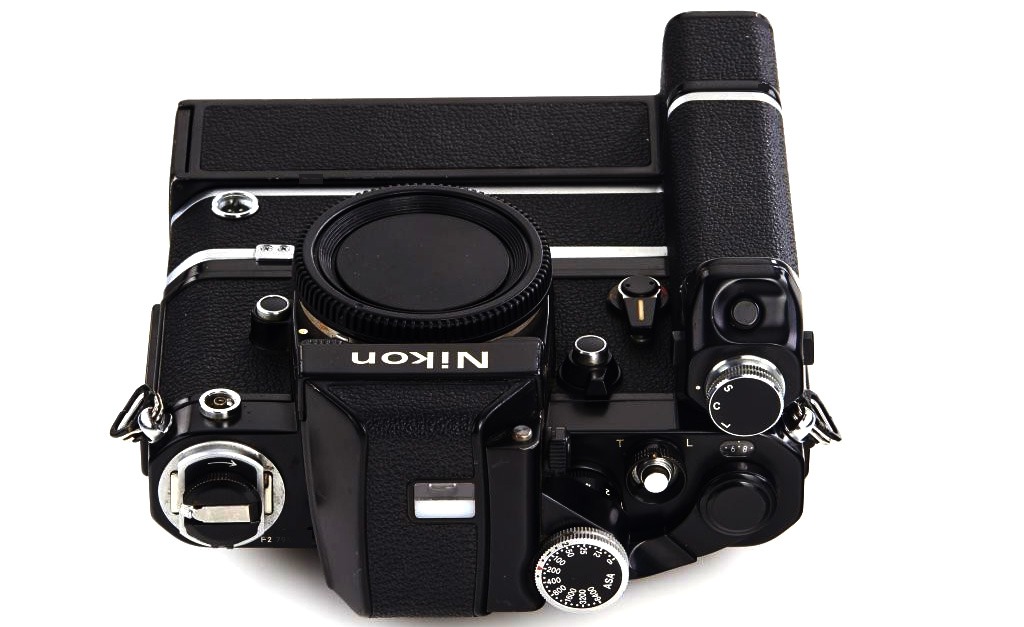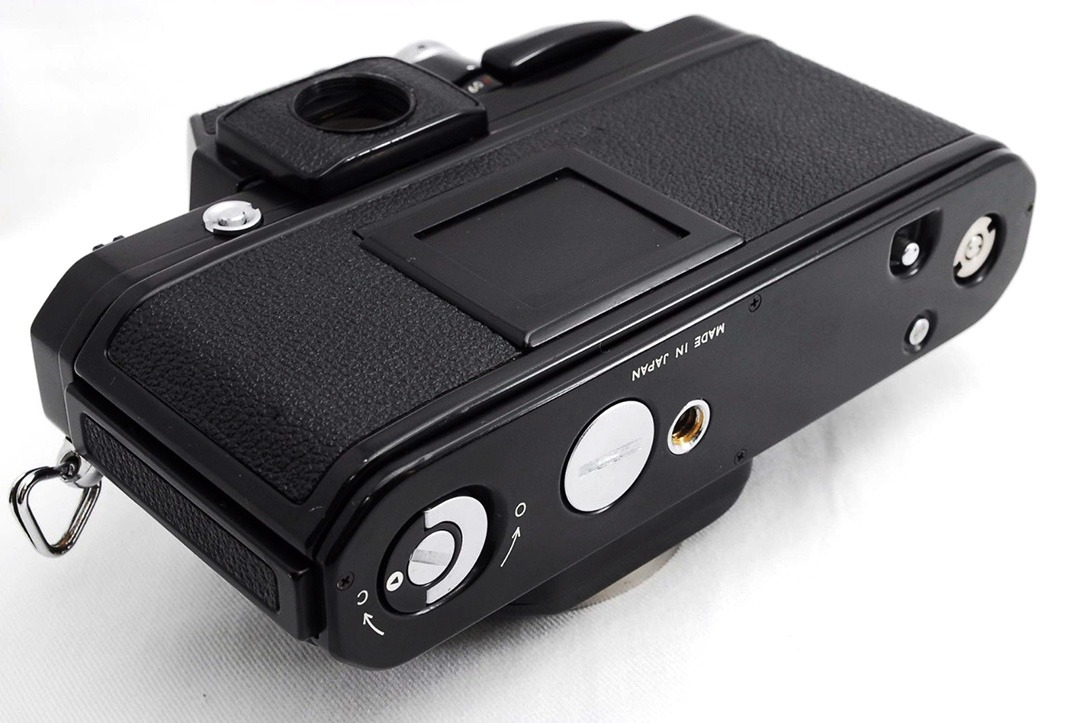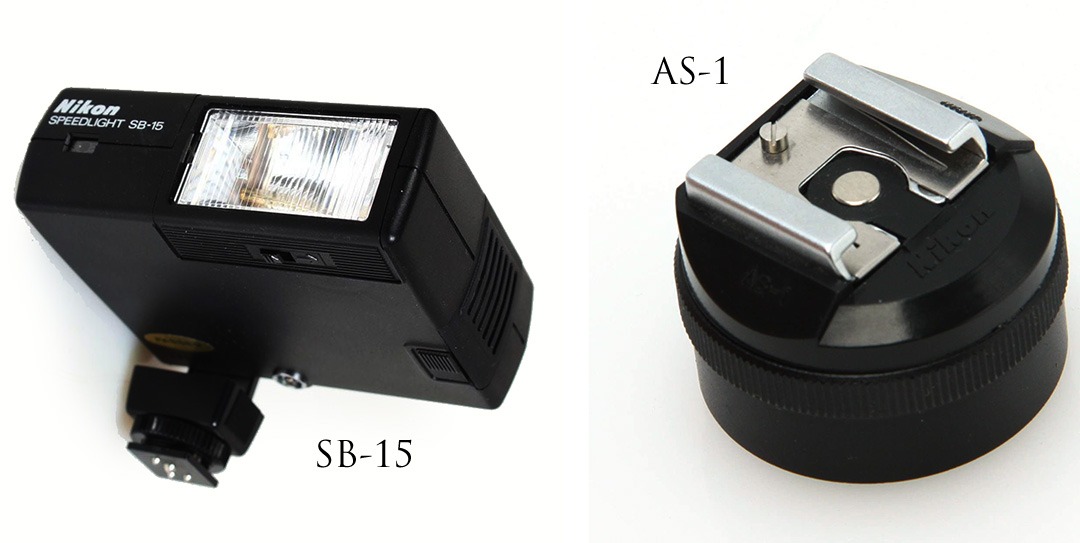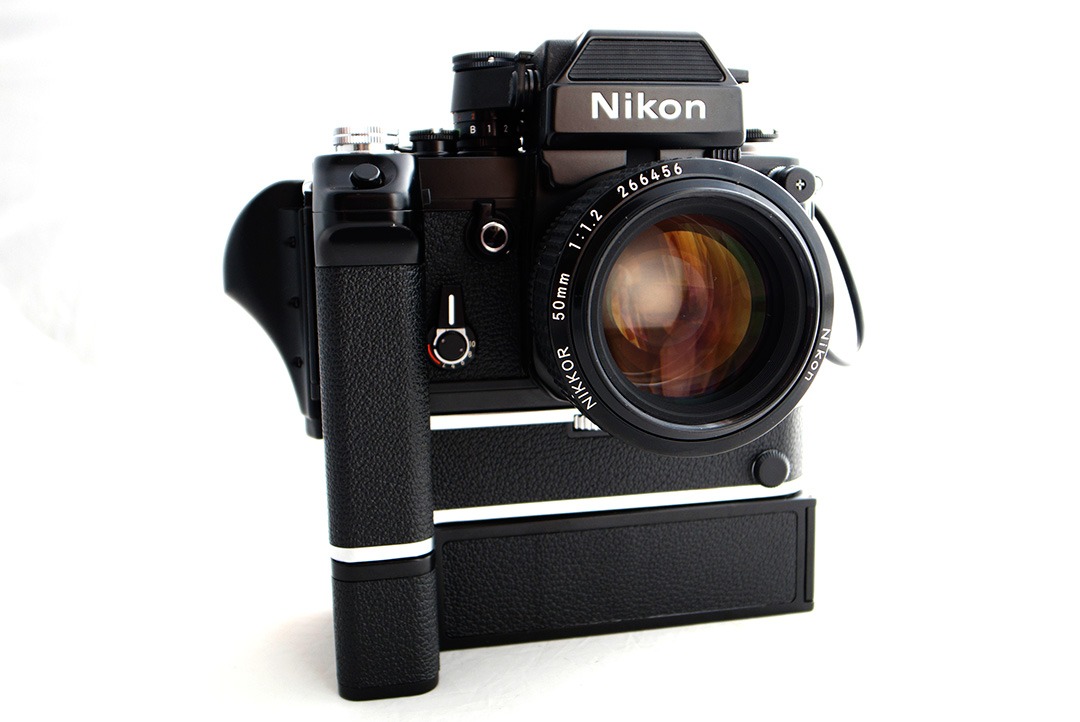The Illustrious Nikon F2
Short attention span? Well, yah! The Nikon F2 and it’s various incantations was a photojournalist and war photographers’ go to camera in the 70’s and part of the 80’s. Even after the release of the F3. (which was initially not well received) The Nikon F3 was electronic, and was not trusted to meet professional demands under all conditions. Time proved the F3 just as reliable, and eventually the pros all jumped on board. The major differences are the meter and the shutter timing. Otherwise,…nada. The F2 has the meter in the pentaprism and the body is completely mechanical. For the F3, the combination of the meter in the body and the electronic shutter provides an aperture priority mode. Supposedly the electronic shutter was more precise in the F3, and didn’t need adjustment. (What? Every 10 years on an F2?) Since I’ve never had an F2 with shutter precision issues, those may just be anecdotal urban legends. Also, film advance is suppose to be smoother on the F3. Not to me. They’re both smooth as butter. Also, some say the MD-4 motor drive for the F3 is better than the F2’s MD-2. Well, it’s certainly quieter, but better? Eh.
Nikon F2 Viewfinders
One definite advantage of the F2 is the mirror. Like on most modern cameras, the F3 has the metering cell behind the mirror, in the body. The meter in the F2 is in the viewfinder. That fact alone makes the viewfinder brighter. And there are some aftermarket screens that almost blind you! Especially with a fast lens. Now, here’s the confusing part. The F2 has LOTS of viewfinder options,…which is what makes them the different suffixes. (F2AS, F2S, etc.) See this list; (and don’t ask me why the finders jump from DP-3 to DP-11,…probably some Japanese Haiku thing)

DP-1 Viewfinder: Interchangeable eye level pentaprism type with built-in TTL exposure meter (F2); 100% frame coverage; exposure data visible in the viewfinder; Type A (early) or Type K focusing screen supplied as standard Exposure information visible in and atop the finder; Electronic flash ready-light provided.
DP-2 Viewfinder: Interchangeable eye level pentaprism type with built-in TTL exposure meter (F2); 100% frame coverage; exposure data visible in the viewfinder; Type K focusing screen supplied as standard Exposure information visible in and atop the finder; Electronic flash ready-light provided, exposure information visible in and atop the finder.
DP-3 Viewfinder: Interchangeable eye level pentaprism type with built-in TTL exposure meter (F2SB); 100% frame coverage; exposure data visible in the viewfinder; type K focusing screen supplied as standard; eyepiece shutter built-in.
DP-11 Viewfinder: Interchangeable eye level pentaprism type with built-in TTL exposure meter (F2A); 100% frame coverage; exposure data visible in the viewfinder; type K focusing screen supplied as standard.
DP-12 Viewfinder: Interchangeable eye level pentaprism type with built-in TTL exposure meter (F2AS);100% frame coverage; exposure data visible in the viewfinder; type K focusing screen supplied as standard; eyepiece shutter built-in.
Now everyone goes, “oh, cool, TTL”. Ambient light TTL. NOT flash TTL. The only thing I think is weird about F2’s and F3’s is lack of a hot shoe. And having to use that stupid Nikon AS-1 attachment over the rewind crank. You can only use flashes with “auto”. Or manual, if you prefer. Which I always use anyway,… even on newer cameras. (I hate pre-flash) Nikon made the Nikon SB-2 and Nikon SB-7E specifically for the F2. They integrate perfectly with the viewfinder flash LED. But, you can also use Nikon SB-10, Nikon SB-15, and probably even an SB-27. (on Auto,…not TTL) I’ve seen so many recommendations, that probably any ol’ Thyristor flash is fine.The F2 can pretty much take any strobe, connected by a PC cord or the Nikon AS-1. While mechanical cameras are not normally sensitive to flash voltages, going here will keep you on the safe side.

Maximum Compatibility
There is one more thing I like about the F2 over the F3. I prefer the LED viewfinder over the LCD. But that’s me. Easier to read. Again, this is a personal preference. But this is not an F2 versus an F3 article. However, be assured, the F2 is more than just an incremental improvement over the F. Probably the coolest thing is this camera takes almost every Nikon manual lens,…Non-AI, AI, AI-s and even AF lenses. There are some great savings on non-AI lenses. That said, in the spirit of honesty, I personally go for the AI and AI-s lenses because of the more modern coatings. (like 50mm f/1.2 ) The three earliest DP finders require Nikon F-mount lenses with “rabbit ears”. They required a special mounting procedure. After mounting, the lens aperture ring must be turned back and forth to the smallest aperture and then to the largest aperture to ensure that the lens and the head couple properly.

The batteries for the metered prism are located in the base of the camera not the base of the prism the F2 and uses 2 x 1.5 volt alkaline batteries rather than the obsolete mercury batteries of the Nikon Photomic FTN. All Nikon F2s have horizontal titanium-foil shutters with 1/80 X-sync speeds. The F2 shutter speed is continuously variable between 1/80 and 1/2,000. (setting in between the indents, but continuously variable, nonetheless) The DP-12 can measure light from -2 EV to +17 EV at ISO 100 and a 50mm f/1.4 lens. Even my F4s only goes down to 0 EV. For low light film photography, it’s at the top of the heap.
About Right
On the front right of the finder housing is a small, silver battery-check button, and on the left rear corner is a small terminal that makes contact with the AS-1 hot shoe adapter and illuminates a flash-ready light in the viewfinder. While I would normally brag that my F4s is a great weapon, I think the F2 edges it out. It definitely overtakes it in weight if you add the MD-2 motor drive. It’s really a monster that would probably embarrass most photogs. But, while solid, it’s just about right minus the add-ons. The right side of the Nikon F2 has the self-timer, mirror lockup and depth-of-field preview button. Also the film advance, shutter release and shutter speed settings are also on that right side deck.

There will be no question in your mind why it was the tool of choice of war photographers, and why it made most 35mm pros put down their Leicas. It is responsible for the continuing reign of the SLR. It became one of Nikon’s most revered SLR’s from 1971 to the mid 1980’s, and they produced about 800,000 during that time.The thing about this camera is it will give you as much love as it receives.
Manual


This article claims that the X-synch speed on the F2 is 1⁄90. That’s incorrect. It’s 1⁄80.
It’s also worth pointing out that “The three earliest DP finders” which “require Nikon F-mount lenses with ‘rabbit ears’” are the ones that give the best metering compatibility with the widest range if lenses. The DP-11 (F2A) and DP-12 (F2AS) finders are only compatible with AI lenses. The DP-1, DP-2 (F2S) and DP-3 (F2SB) finders are compatible with any lens that has the “rabbit ears”, which are present on pre-AI lenses, and continued to be present on all AI lenses for decades after the transition.
Hi Bob,
Yes. You are correct. Sort of. Some people call the red dot position “1/90”. (Ken Rockwell, etc.) I can understand this, as there’s not an actual number there. From the manual: “The Nikon F2 is designed to synchronize with various types of flashbulbs, [remember them], at almost all shutter speeds and with electronic flash up to 1/80 second. (the red dot) Some M-class bulbs have a longer flash duration covering all shutter speeds up to 1/2000 sec., except for 1/60 and 1/80 sec.” However, I fixed it to say “1/80”.
As your finder observations go,…you are 100% correct. But, the DP-12 meter is probably the most sensitive and accurate, AI only or not. The original Photomic (DP-1), Photomic S (DP-2) and Photomic SB (DP-3) finders are for Non-AI lenses. The Nikon F2A (DP-11) and Nikon F2AS (DP-12) finders are for the AI and later lenses. Thanks for the additional information. Nikonians know everything. 😀
Hi, there’ one viewfinder missing: the DE-1, which had no metering and made the F2 look like an FM on steroyds 🙂
My best!
Hi Dado,
Yes, the standard, unmetered F2 finder was called DE-1,…kind of a low profile eye level finder. And the F2 Titanium also came with a meterless titanium DE-1/T finder on a Nikon F2/T, which signified the use of titanium on a standard Nikon F2 body. Actually, without the high profile shutter speed ring, you’re right. It does look like an FM on steroids. (minus the hotshoe) 😁
Regards
To be clear, a regular, old F2 has an unmetered DE-1 finder. Mounting a DP-1 metered prism on a Nikon F2 body will make it a Nikon F2 Photomic. When the camera is used with a DP-2 finder, the model will then be referred to as a F2S Photomic. And a DP-3 equipped Nikon F2 is called a F2SB, while a Nikon F2A has a DP-11 finder attached and Nikon F2AS is a F2 camera used with a DP-12. Whew! I think my head just exploded. 😳
I bought an F2 with DE-1 new, when they first came out. I think I had had it about a year before I upgraded and bought the DP-12 finder and used the F2AS for about 10 years.
I upgraded to the F3 and subsequently years down the line to the F4 along with other Nikon cameras. However, non of them excited me as much as that first F2.
Curiously, I never thought I would ever feel the same about a camera, but about 40 years on I got the Nikon D850 and have to say, it’s been worth the wait
I had one with DP11 a great camera ! In the case of flash i used a Metz 402 a nice combo. The F2A has some kind of magic !
😁
A month after my 19th birthday, I treated myself to a new F2A w/ the 50/1.4. That was Feb, 1977. Still runs like a clock, still looks like it’s a year old. It’s outlived two MD-2 motors and the only maintenance it has required is a replacement of mirror box foam.
Great camera! I really want a black F with plain pentaprism to keep mine company. Love your articles! @gottanikoncamera
Hi Hernando,
Yeah, the F2 was an amazing camera, with probably the most prism finders of any camera. (and other custom user variables) But the main thing I lament is the build quality. If only Nikon had continued with that attention to quality, even if only with their flagship cameras, they would have been the “Leica of the East”. Sigh. 😥 Oh, well. We still have Paris. (I mean the F2)
Federico